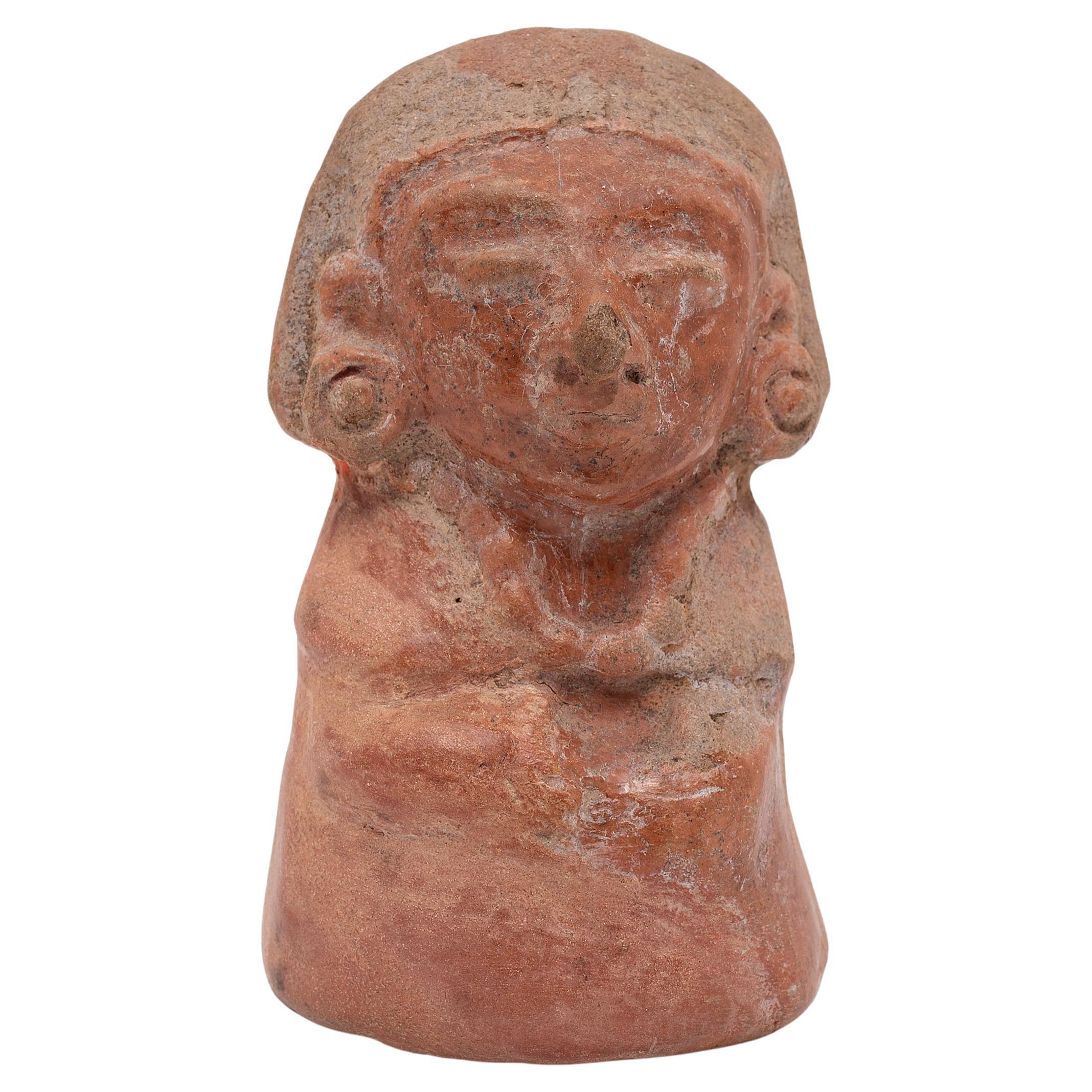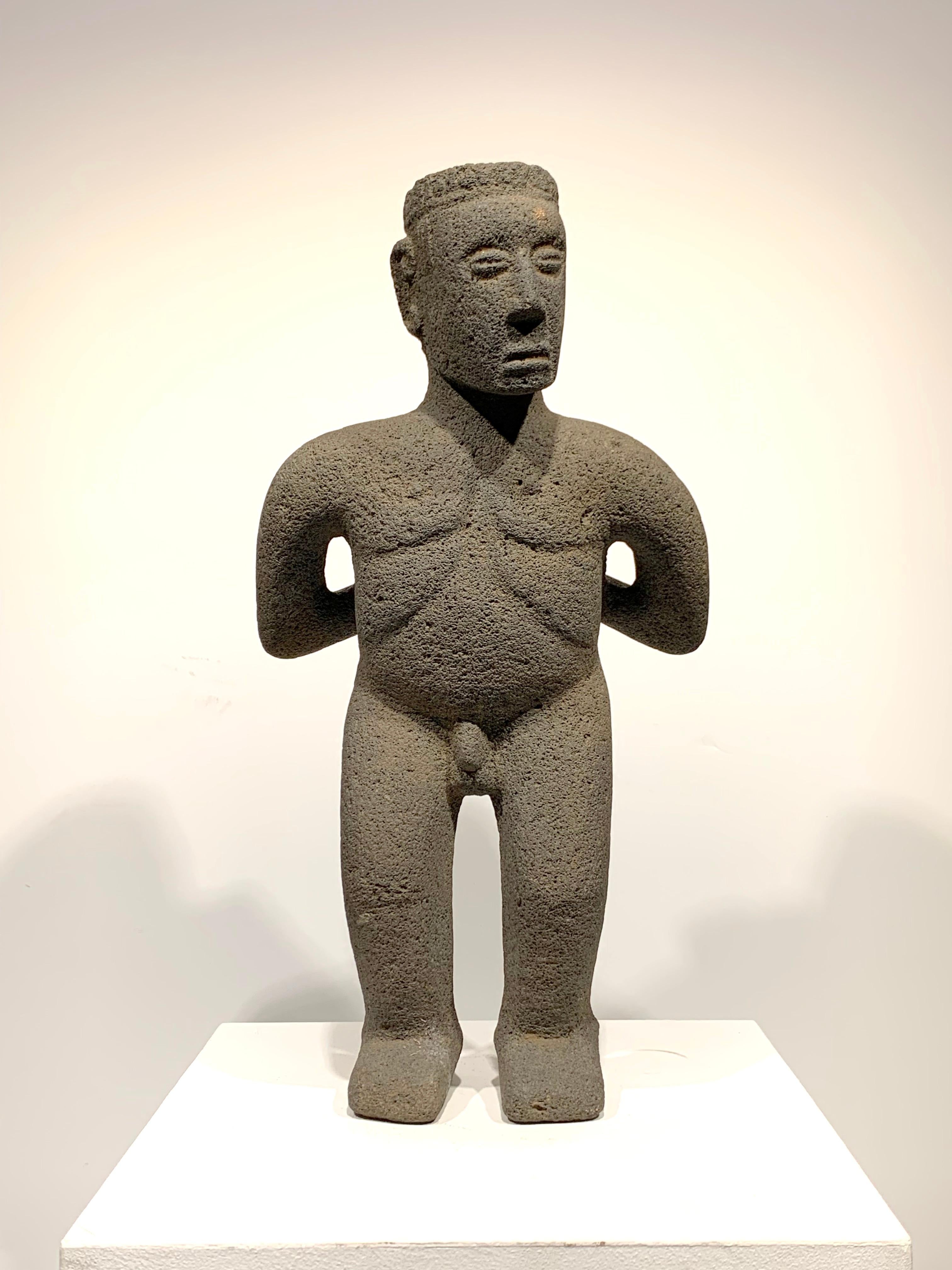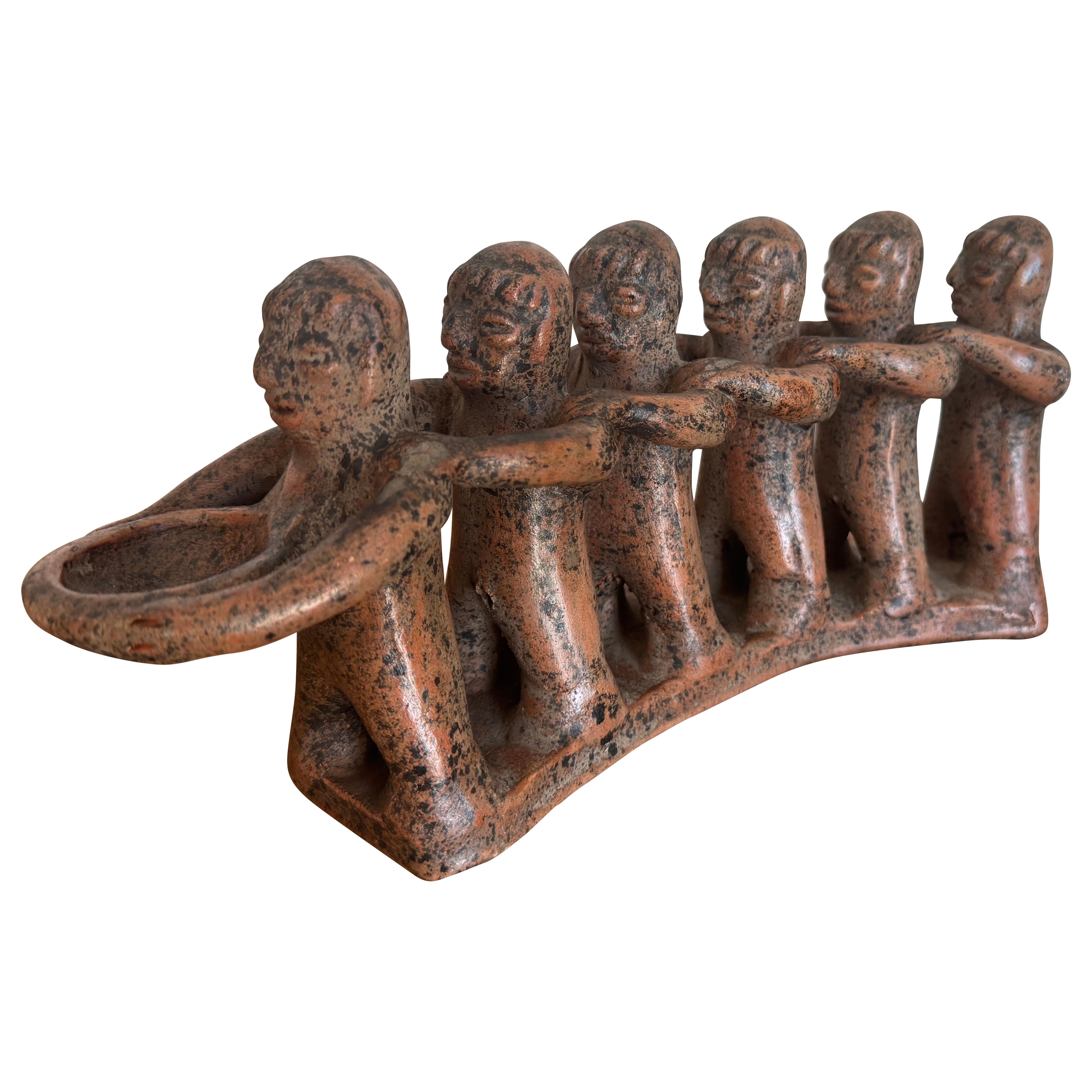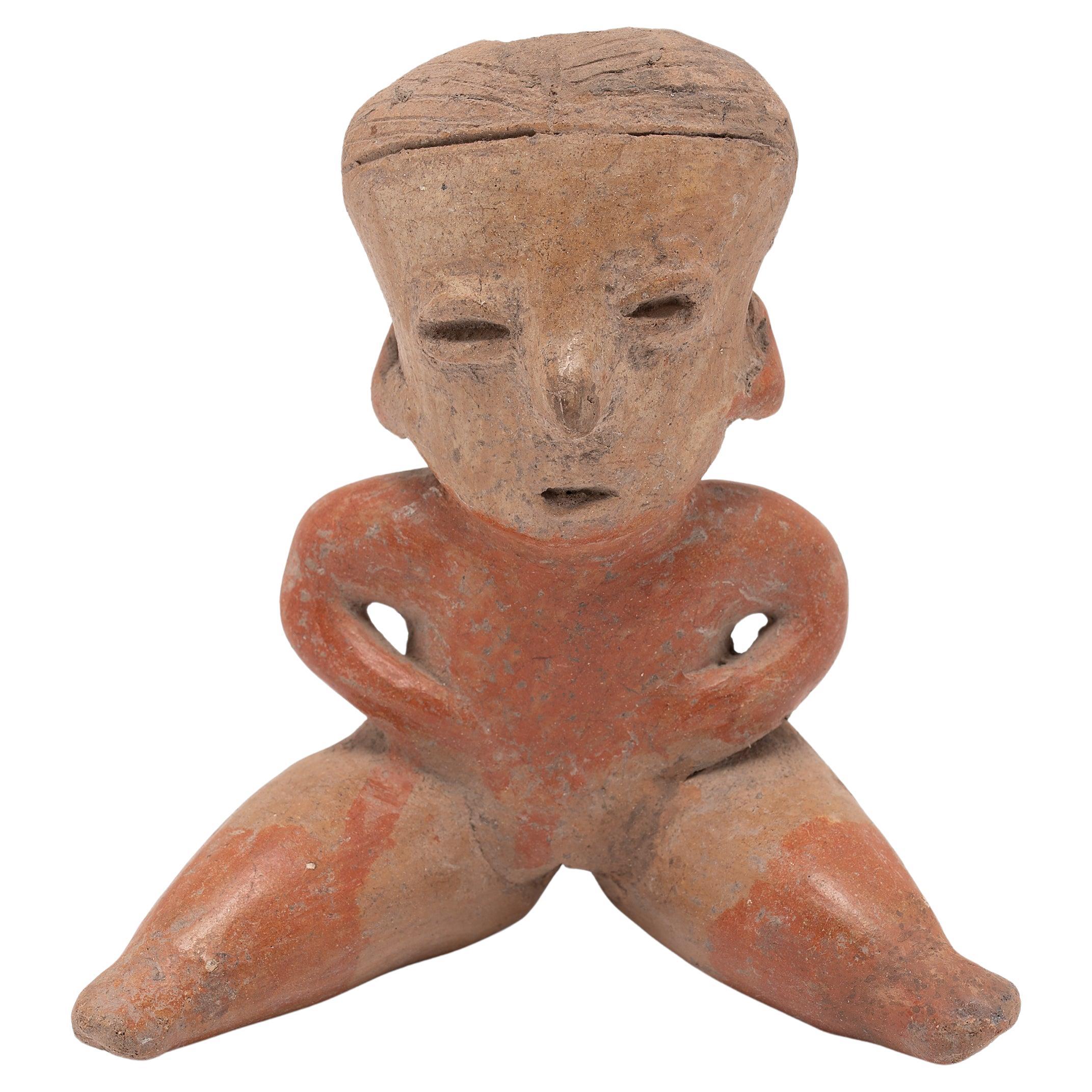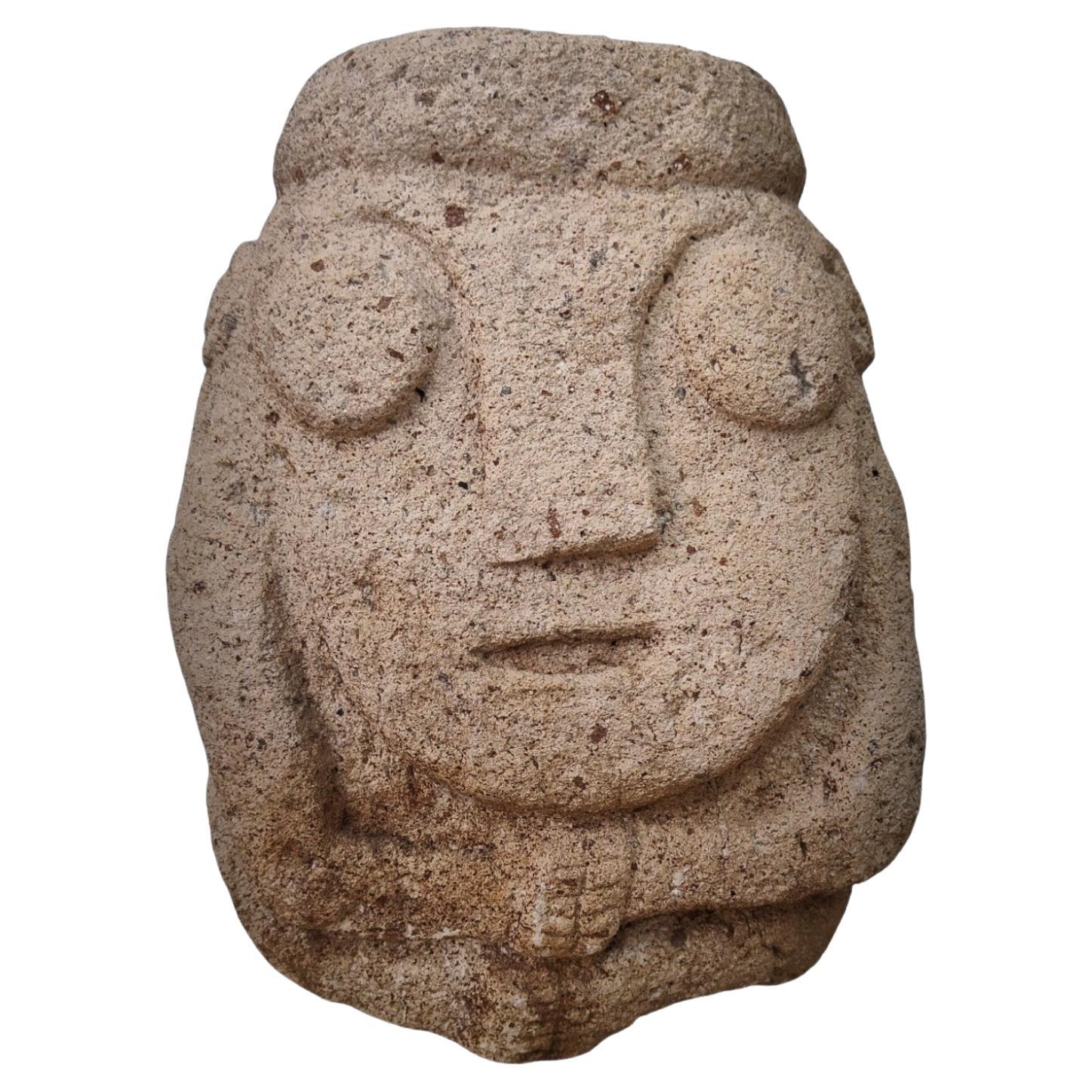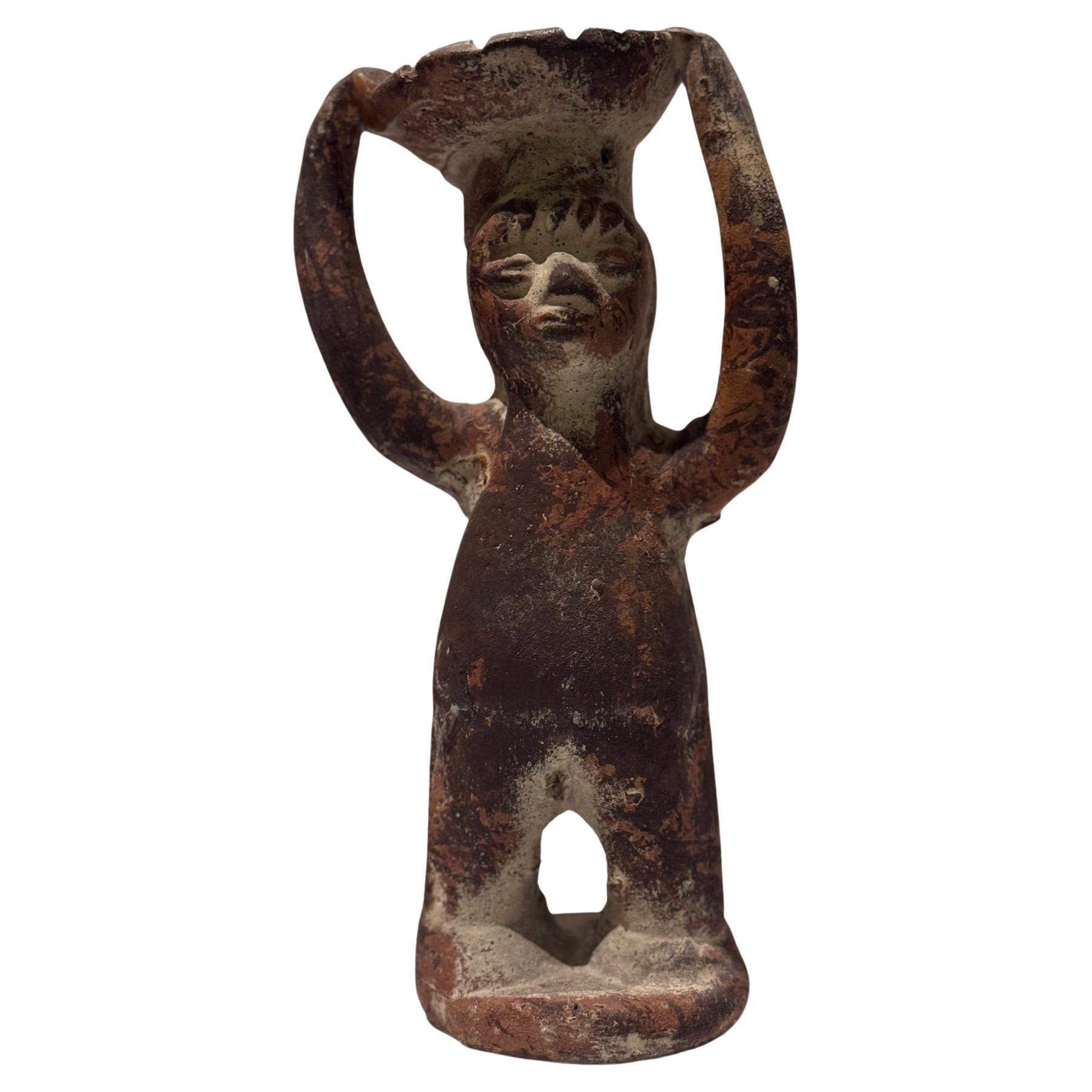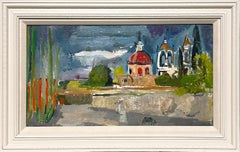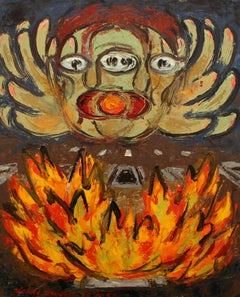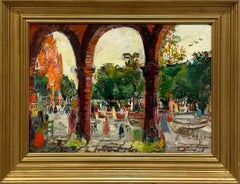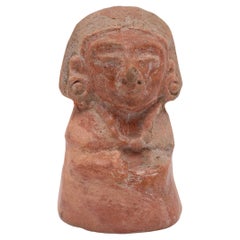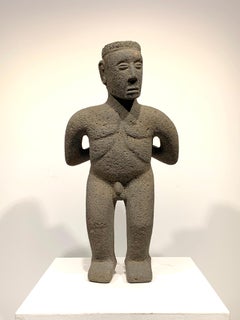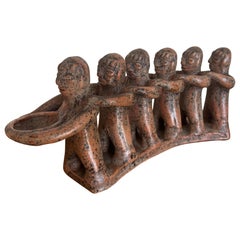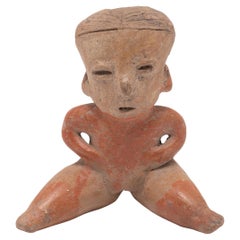Items Similar to A Grouping of Three Period Ancestor Posts, Possibly Aztec
Want more images or videos?
Request additional images or videos from the seller
1 of 16
UnknownA Grouping of Three Period Ancestor Posts, Possibly AztecPrior to 1968
Prior to 1968
$850
£658.91
€745.84
CA$1,216.53
A$1,327.51
CHF 689.05
MX$15,882.49
NOK 8,746.30
SEK 8,192.54
DKK 5,571.17
About the Item
A Grouping of Three Period Figural Ancestor Posts; Mexican Tribal Figures, Possibly Pre-Columbian Aztec. Each are Terra cotta or sandstone with obsidian glass inlay to the eyes; Dating prior to 1968. Each measuring approximately 18 inches high x 14 inches wide. Provenance: Private collection, Chicago, Illinois, acquired white traveling in Mexico circa 1950s.
- Creation Year:Prior to 1968
- Dimensions:Height: 18 in (45.72 cm)Width: 14 in (35.56 cm)Depth: 3 in (7.62 cm)
- Medium:
- Movement & Style:
- Period:
- Condition:Original estate condition (see photos).
- Gallery Location:Chicago, IL
- Reference Number:Seller: 207571stDibs: LU2591216991312
About the Seller
5.0
Recognized Seller
These prestigious sellers are industry leaders and represent the highest echelon for item quality and design.
Established in 2000
1stDibs seller since 2023
108 sales on 1stDibs
Typical response time: <1 hour
- ShippingRetrieving quote...Shipping from: Chicago, IL
- Return Policy
More From This Seller
View AllEarly Mexican City Scene by Chicago Artist Francis Chapin, San Miguel de Allende
By Francis Chapin
Located in Chicago, IL
A charming, vibrant, early Mexican city street scene by famed Chicago Modern artist Francis Chapin (Am. 1899-1965). Depicting a quiet, picturesque view of the rooftops and cathedral...
Category
1940s American Modern Landscape Paintings
Materials
Masonite, Oil
"The Scream", A 1950s Mid-Century Modern Surrealist Abstract Painting
By Harold Haydon
Located in Chicago, IL
"The Scream", A compelling, enigmatic 1950s Mid-Century Modern Surrealist Abstract Painting by Notable Chicago Artist, Harold Haydon (Am. 1909-1994). Executed in Haydon's unique, a...
Category
Mid-20th Century Surrealist Abstract Paintings
Materials
Oil, Canvas
1940s Mexican City Scene by Famed Artist Francis Chapin, San Miguel de Allende
By Francis Chapin
Located in Chicago, IL
A charming, vibrant, early Mexican city street scene by famed Chicago Modern artist Francis Chapin (Am. 1899-1965). Depicting a bustling, picturesque view of the shaded, arched arca...
Category
1940s American Modern Landscape Paintings
Materials
Oil, Canvas
A Pair of Mid-Century, Pen & Ink Interior Drawings by Artist Harold Haydon
By Harold Haydon
Located in Chicago, IL
A pair of delightful, Mid-Century interior scenes in pen & ink by artist Harold Haydon.
Image sizes: 6" x 9" each. Each are archivally matted to 12" x 16".
Harold Emerson Haydon w...
Category
1950s American Modern Interior Drawings and Watercolors
Materials
Ink, Pen
An Avant-Garde, Mid-Century Modern Abstract Female Figure Study by Harold Haydon
By Harold Haydon
Located in Chicago, IL
A Dynamic, Avant-Garde, Mid-Century Modern Abstract Female Figure Study by Harold Haydon (Am. 1909-1994). A striking, black & white figural studio ink drawing on paper depicting an...
Category
Mid-20th Century American Modern Abstract Drawings and Watercolors
Materials
Paper, Ink
A Striking Early Modern 1934 Abstract WC by Hananiah Harari, "Les trois graces"
By Hananiah Harari
Located in Chicago, IL
A Striking, Early Modern, Figurative Abstract Watercolor by Notable New York Avant Garde Artist, Hannah Harari (Am. 1912-2000). Titled "Les trios graces" (The Three Graces), the art...
Category
1930s Abstract Abstract Drawings and Watercolors
Materials
Paper, Ink, Watercolor
You May Also Like
Teotihuacan Redware Figure
Located in Chicago, IL
This intriguing redware figure was crafted in 400 A.D. from the ancient Teotihuacan region of Mexico. Earthenware figurines were made in great abundance throughout Teotihuacan's history. After 250 A.D. objects made from clay increased dramatically, serving a wide variety of purposes and functions from religious rituals to burial offerings.
Figurines like this commemorated important people and events within the city of Teotihuacan and other parts of Mesoamerica, portraying individuals of different rank and status such as soldiers, merchants, bureaucrats, and occasionally divinities. This figure is adorned with an elaborate headdress, a thick beaded necklace...
Category
Antique 15th Century and Earlier Mexican Pre-Columbian Figurative Sculpt...
Materials
Ceramic
Costa Rican pre-Columbian sculptural figure ca. 1000-1500
Located in Wilton Manors, FL
Magnificent standing figure, Costa Rica, ca. 1000-1500. Carved volcanic stone. Measures 16.5 x 9 x 5.5 inches. Outstanding condition with no damage.
The figure represents a captured...
Category
15th Century and Earlier Figurative Sculptures
Materials
Stone
Collective Human Figures Terracotta Sculpture, Mexican Folk Art”
Located in Queretaro, Queretaro
A powerful hand-sculpted clay artwork representing a procession of human figures, each joined in a continuous rhythm of movement and unity. This piece reflects the essence of Mexican...
Category
2010s Mexican Pre-Columbian Primitives
Materials
Ceramic, Terracotta
Nayarit Chinesco-Style Figure
Located in Chicago, IL
This seated effigy figure was crafted in 300 BC to 300 AD from the ancient Nayarit region of Mexico and was likely used as a ritual or burial offering. The ceramic works of the Chine...
Category
Antique 15th Century and Earlier Mexican Pre-Columbian Figurative Sculpt...
Materials
Ceramic
Stone Carved Anthropomorphic Sculpture From The Recuay Culture Peru 400bc-400ac
Located in Madrid, ES
ANTHROPOMORPHIC SCULPTURE CARVED IN STONE OF THE RECUAY CULTURE PERU 400BC-400AC
Recuay is an archaeological culture of Ancient Peru that developed in the Sierra of the current Peruvian department of Áncash between 200 AD. C. until 600 d. C. It corresponds to the stage called Regional Developments, it has also been called the Huaylas or Santa culture.
Like the other Early Intermediate cultures, little is known about this culture. The most accepted position is that it was an extension of the Chavin culture, after the influence of the "White on Red" style in the region. Regarding the political aspect of the recuay, there is a hypothesis that questions their autonomy and maintains that Recuay would be part of one of the many political units that made up the Moche state.
The recuay style, characterized by its ceramics and stone sculpture, was initially described by Eduard Seler in 1893, based on ceramic specimens brought to the Ethnographic Museum in Berlin by Mariano M. Macedo. Seler named this style of pottery Recuay, based on the report that these pieces had been found in the town of Recuay. Later studies showed that this characteristic pottery was not originally from Recuay but from Copa, near Carhuaz, for which reason the name change to that of this town was proposed. Eventually the name of Huaylas was used for this culture. In 1919 Julio C. Tello explored the area and recovered lithic sculptures and Recuay-type ceramics. In the 1960s Rafael Larco Hoyle proposed changing the names of Recuay and Copa to Santa, arguing that the Recuay style had originated in the coastal regions of the Santa Valley. However, the name Recuay has persisted.
Its chronology is also highly debatable. The time of its origin between 0 and 200 AD is discussed. C. and its end or collapse is commonly set to 600 d. C. probably caused by the invasion of the Huari conquerors.
It encompassed almost the entire Callejón de Huaylas, a narrow valley fed by the Santa River and enclosed between two mountain ranges, the Cordillera Blanca to the west and the Cordillera Negra to the east. Its influence extended to the east to the Marañón river basin and to the west to the upper parts of the Santa, Casma and Huarmey valleys. To the north it reached the town of Pashash, in the province of Pallasca.
The Copa area, Marca district, Recuay province, Ancash department seems to have been the center or main nucleus of cohesion of this culture. The name of the culture would then be justified, derived from the province of the same name. Other important settlements were those of Huilcahuaín (near the current city of Ancash), Cátac, Araucay, Tambo, Jancu, Upayacu and Pashash (near the current city of Cabana).
Its main form of expression of art was through stone work (carving and masonry), inherited from its predecessor, the Chavín culture. In addition, they made sculptures in lumps that represent warriors with shields or trophy heads, with which they decorated their complex architectural constructions. They also made white clay pottery...
Category
Antique 15th Century and Earlier Figurative Sculptures
Materials
Stone
Pre-Columbian Style Terracotta Ritual Figure with Raised Arms
Located in West Hollywood, CA
This Pre-Columbian style terracotta sculpture is a remarkable representation of early Mesoamerican artistic traditions, handcrafted in a primitive yet evocative manner. The figure, d...
Category
Mid-20th Century Unknown Tribal Figurative Sculptures
Materials
Terracotta
